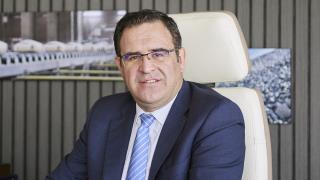Holcim is the world’s largest international cement producer, achieving worldwide sales of 136Mt in 2010. In his interview with ICR, Markus Akermann, Chief Executive Officer of Holcim Group, discusses a range of topical issues ranging from the challenges of dealing with the aftermath of the global financial crisis to the group’s recent performance, and future
strategies for growth and development.
Navigating the financial crisis
ICR: The last few years have seen the unfolding of dramatic events in the world’s economy and construction markets. Unlike some of your peers, Holcim avoided making any large acquisitions at the top of the cycle. Did you see the trouble coming?
Akermann: We didn’t know more than others. When investing or acquiring, we have three criteria to be met by such a project: there must be a strategic fit, it must create value and it must be fundable. The high EBITDA multiples paid at peak EBITDA in the cycle before the financial crisis made meeting the value creation criterion very unlikely.
ICR: How has the economic crisis impacted Holcim from a market and financial perspective, and what has been your response from a management and strategic point-of-view?
• How have you balanced the need to cut costs and maintain margins with the need to modernise and expand capacity, ready for demand recovery?
Akermann: Holcim immediately embarked on a tight cost-cutting programme at the outbreak of the financial crisis in the second half of 2008. In 2009, the group reduced its fixed costs by approximately CHF900m. In 2010, the savings came to another CHF312m – and this despite our capacity expansion programme. Particularly in Europe and North America, plants were shut down permanently or mothballed. All-in-all, 23 kiln lines with a production capacity of more than 10Mt of cement were closed. In addition, more than 100 aggregates, asphalt and ready-mix concrete plants were closed temporarily.
